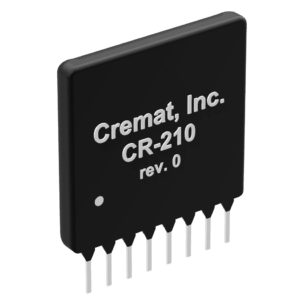- Electronics People Since 1965
- +91-9821745455
- hiren@brilliantelectronics.com
CR-210-R0 baseline restorer

Product Enquiry
Product Features
The output signal of a charge sensitive preamplifier or shaping amplifier typically passes through at least one AC-coupled amplification stage in order to block a DC bias. The result is that the overall DC gain of the electronics is zero, meaning that the time-averaged output value of the shaping amplifier is zero. This presents a problem when a shaping amplifier processes pulses at high rates, because the signal baseline may become significantly depressed. This may also result in a shifting baseline, one that is dependent on the counting rate, and this can degrade the resolution of spectroscopic measurements.
Part Descriptions
Cremat offers the CR-210-R0 baseline restorer in order to redefine the output baseline to one that is no longer dependent on pulse counting rate. The CR-210-R0 is intended to be employed at the output of the CR-200-X shaping amplifier and maintains the Gaussian output pulse shape but corrects for the shifting baseline. The CR-210-R0 will work with any of Cremat's shaping amplifier modules.
The new CR-160-R8 evaluation board has a socket for the optional use of the CR-210-R0 module.


